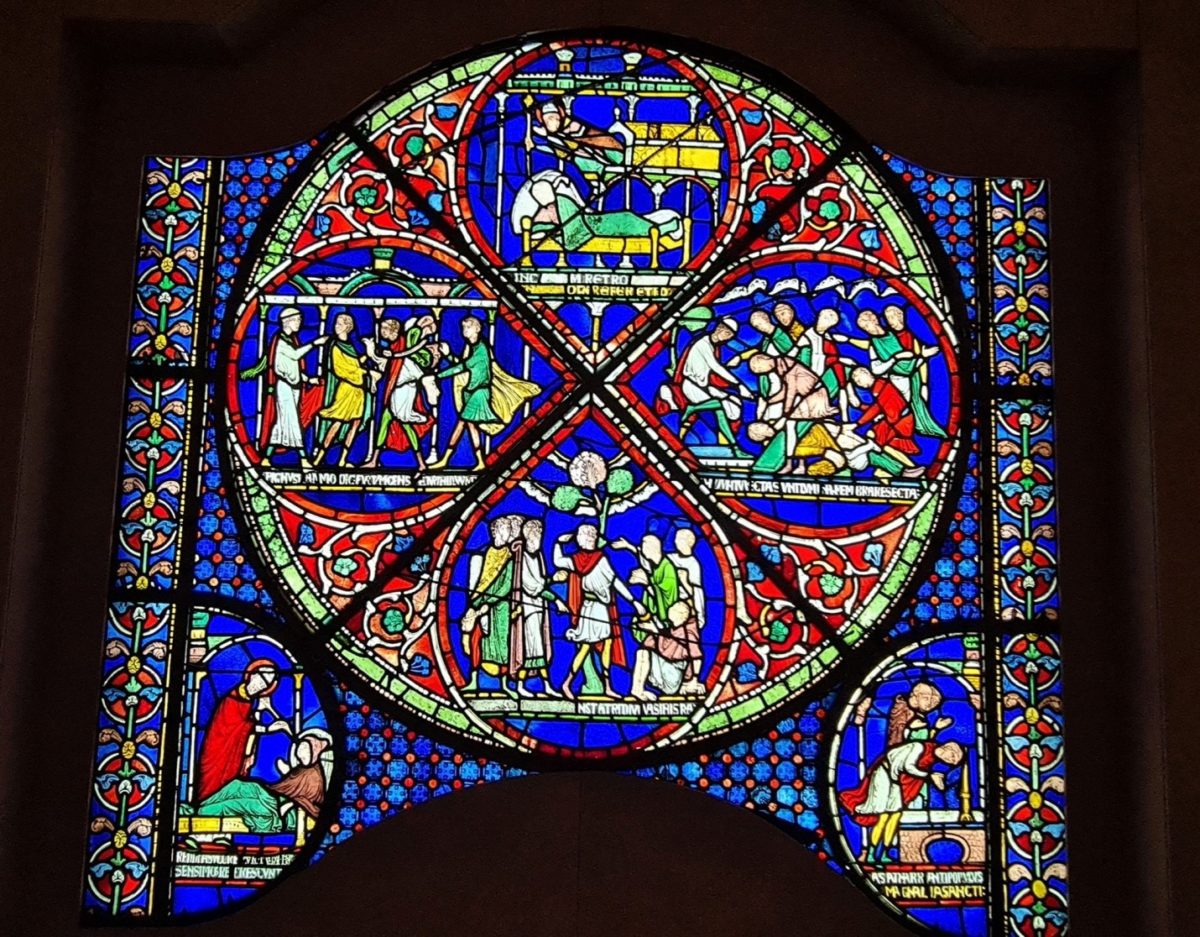When Samuel L. Jackson promises to “get medieval on your ass” in Pulp Fiction he might well have been thinking of Eilward of Westoning, who in the early 13th century destroyed his neighbour’s gloves and whetstone in a drunken rage.
By modern standards Eilward’s punishment was on the harsh side. He was tied down; his eyes were plucked out and he was castrated.

Sculpture showing the murder
Putting that sort of damage right is still beyond the capabilities of modern medicine, but Eilward was able to appeal to a higher power and prayed to the recently canonised Thomas Becket. The saint put a good word for Eilward in with God and the poor man’s sight and nether regions were restored. (In the photo the punishment is on the right and the recovery is at the bottom.)
We know this is true because there is a superb stained glass window commemorating the miracle and it’s currently on display at the British museum where it’s one of the highlights of Thomas Becket: murder and the making of a saint which is running till August 22nd.
The museum is currently showing two exhibitions featuring members of the ruling class who end up on the wrong side of a power struggle. Nero: the man behind the myth is an unsatisfying attempt to present him as a populist who fell out with other members of the ruling elite and got a bad press as a result. Perhaps two millennia hence a museum will be tempted to offer a similar reappraisal of Johnson or Trump.
Save yourself £20 and instead splash out £17 on Becket. He is remembered these days mainly as the cleric referred to in Henry II’s apocryphal question “Will no one rid me of this meddlesome priest?” He’s also the subject of TS Elliot’s 1935 play Murder in the Cathedral, a favourite on the English A-level syllabus of Catholic school because he wrestles with his conscience about his motives for his inevitable martyrdom as he challenges the king’s authority.

This stained glass shows Eilward’s torture and recovery
In addition to the exquisite stained glass the exhibition offers reliquaries, manuscripts and sculptures from all across Europe. There would be a lot more of stained glass if the Protestants hadn’t smashed it during their Reformation. Henry Tudor wanted virtually all traces of Becket removed. Becket’s cult was international, the Catholic Church having identified him as a defender of its authority over secular rulers, and this is made tangible by the medieval equivalent of gig T shirts, little badges showing that you’d done the pilgrimage.

A reliquiary telling the Beckett story
It’s a transcendently beautiful exhibition and worth seeing for that reason alone. It might also be worth going to if you have any medical conditions your doctors aren’t curing. Some people have been kissing the display cabinets, presumably in the hope that Becket might do a little of what he did for Eilward for them.
Tickets for ‘Thomas Becket murder and the making of a saint’ can be purchased from the British Museum here.

